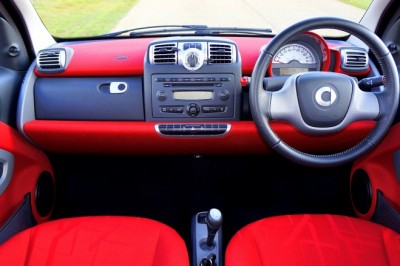Innovative Car Safety Features
Car safety is the avoidance of car accidents or the minimization of harmful impacts of accidents. Special safety features have been fitted into cars for years to ensure optimized safety of the driver as well as the passengers.
Gradually, as new cars started entering the market , innovative safety features were also introduced. Major factors contributing to car accidents are driving under the influence of alcohol and drugs, inattentive driving, drowsiness, and encounters with various obstacles like bumps and potholes. There are many new car safety features that have not only reduced the rate of road accidents but have also minimized its impact on human health.
Here are some of the innovative car safety features that have set new benchmark in the car safety segment:
Airbags
Airbags are cushion like structure built into a vehicle to disperse impact energy in case of an accident. Immediately after a car meets an accident, the inbuilt sensors start to measure impact severity and if the crash is severe the airbags automatically gets inflated.
There are mainly two types of airbags, frontal airbags and side airbgas. Frontal airbags are fitted in the steering wheel or the instrument panel and deploy in frontal crashes to protect front-seat passengers. Side airbags are mainly equipped in the seat back, door, or roof to protect both front and rear seat passengers. Some side airbag systems protect only the torso, some protect only the head, and some protect both the head and torso.
Anti-lock Brakes
Anti-lock brakes (ABS) is an innovative car safety technology that prevents wheel locking and ensures a safe ride especially on wet roads. The system is linked with sensors that monitor the road conditions and if any of the wheel is about to lock up, it takes control and and avoids wheel locking. This in turn helps the driver to have better control on the steering wheel and also improves traction. In the modern era, many of the new cars plying on Indian roads are equipped with ABS that are associated with electronic brakeforce distribution (EBD) to ensure even distribution of force to all four wheels.
Adaptive Cruise Control
Adaptive cruise control (ACC) is an advanced cruise control system that uses either a radar or laser setup to enable the car to maintain a safe distance with the vehicle in the front. The system automatically reduces the speed of the car based on the traffic situation. If the driver accelerates and the system feels that it may cause an accident, it automatically reduces engine power to maintain a safe distance. The key functions of the adaptive cruise control system are reducing accident rate and increasing fuel efficiency.
Electronic Stability Control
Electronic stability control (ESC) is an active safety feature that helps to avoid accidents. At times even the most experienced driver may lose control. In such situations ESC system helps to recognize the impending situation and takes an action to keep the car in control. The equipped sensors monitor the steering manoeuvre and the direction of the car. If there is any kind of discrepancy between the steering input by the driver and the direction of the car, the ESC automatically actuate brakes or reduce engine performance for improved safety. This innovative safety feature is mostly mated to anti-lock brakes for improved safety.
Active Head Restraints
Active head restrain is an innovative technology that moves forward and upward in a rear-end collision to cushion the occupants head. The system uses a lever-action mechanism built into a seat and redirects the force of an occupants body as it presses into the seat. The motion of the restrain is based on the size and weight of the occupant and also the impact severity.




















